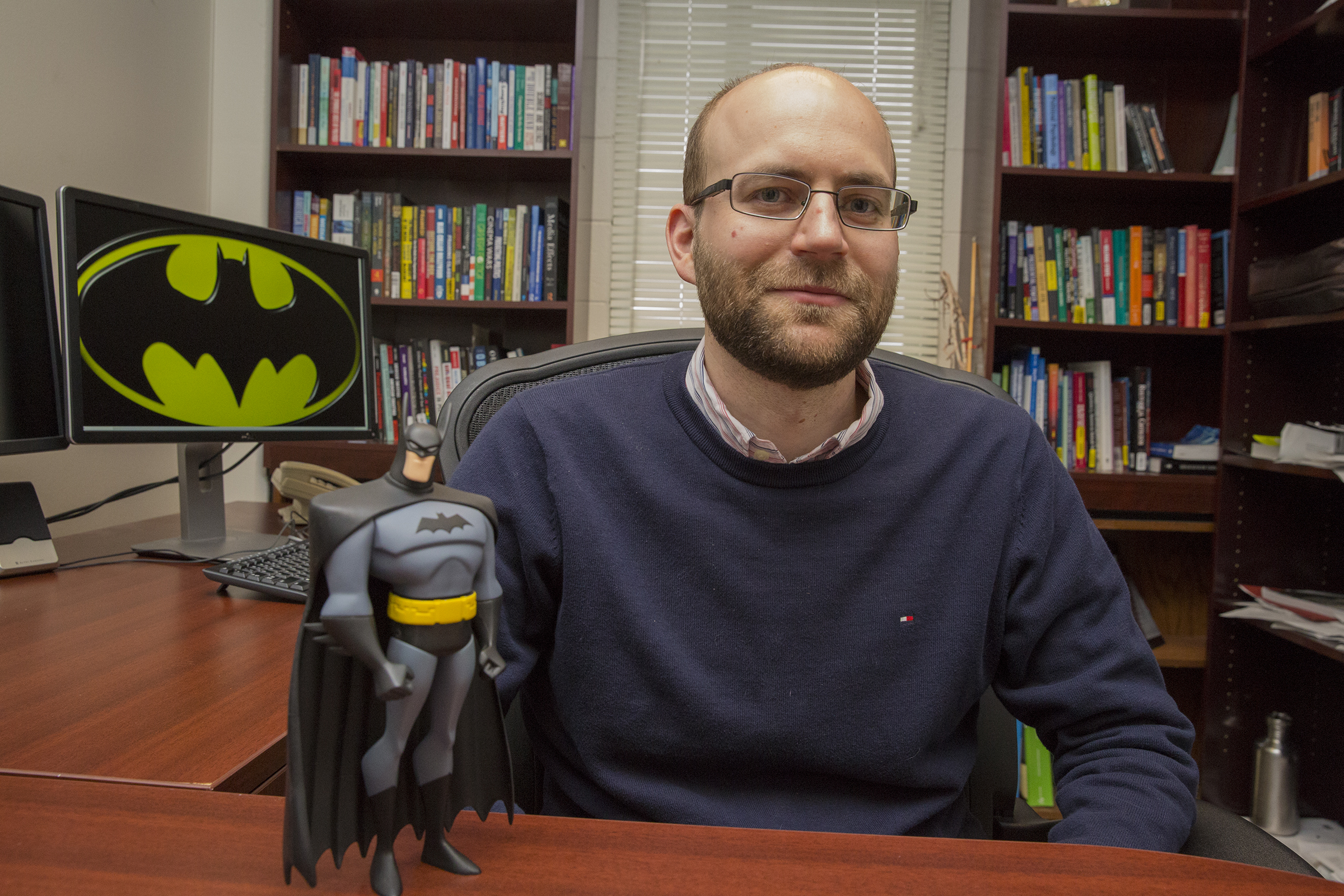
When you count this year’s “Batman v Superman: Dawn of Justice,” Hollywood has produced 10 movies featuring DC Comics hero Batman since 1966.
The first – “Batman: The Movie” – was a Day-Glo depiction of a crime-fighting superhero working side-by-side with police. More recent versions portray a murkier hero with vigilante tendencies and often antagonistic relationship with authorities.
A new sociological study by a University of Nebraska-Lincoln researcher examines what a changing Batman reveals about Americans’ attitudes toward authority during the past 56 years. Brandon Bosch, an assistant professor of practice who holds dual appointments in political science and sociology, found that Batman movies made during insecure and threatening times feature a complex blend of authoritarian themes:
A hero with more emotional and moral conflicts;
A heightened sense of fear and social chaos; and
A more pronounced “get-tough-on-crime” attitude.
Yet, perhaps surprisingly, they don’t show particularly cooperative attitudes toward traditional authority figures like police and elected officials.
“Indeed, 67 percent of all the Batman films show the police trying to arrest Batman,” Bosch noted in the study, to be published in the journal Criminology, Criminal Justice, Law and Society. “… High-threat period films are more critical of authority figures and position Batman as an outsider who endures attacks from police and politicians (as well as the public).”
The finding is consistent with other research that shows people tend to be more cynical toward authority during high-threat periods, Bosch said. Although other researchers, including UNL sociologist Lisa Kort-Butler, have studied comic book heroes and TV cartoons, there has been little sociological analysis of how moviemakers interpret the superhero genre.
Bosch, who studies and teaches about political communication, said Batman films can be a subtle way to examine public attitudes about politics.
“You don’t think about Batman movies as having a political message, but the things that happen are still inherently political to some extent,” he said.
Bosch began working on the study about two years ago and did not include the newly released “Batman v Superman” in his analysis. Using a framework established by previous researchers, Bosch categorized each movie according to whether filming launched during a high-threat or low-threat period. Indicators used to determine whether a period was high- or low-threat included crime and economic statistics, public perceptions about crime and the economy and ongoing events, such as the 2001 terrorist attacks and the military actions in Afghanistan and Iraq.
Four of the nine were deemed low-threat period movies: “Batman: the Movie, (filming started in 1966),” directed by Leslie H. Martinson and starring Adam West as Batman; “Batman (filmed in 1988),” directed by Tim Burton and starring Michael Keaton; “Batman Forever (filmed in 1994),” directed by Joel Schumacher and starring Val Kilmer; and “Batman & Robin (filmed in 1996),” directed by Schumacher and starring George Clooney.
The remaining five were designated as high-threat period movies: “Batman Returns (filmed in 1991),” directed by Burton and starring Keaton; “Batman: Mask of the Phantasm (1993),” an animated feature directed by Eric Radomski and Bruce W. Timm; “Batman Begins (filmed in 2004),” directed by Christopher Nolan and starring Christian Bale; “The Dark Knight (filmed in 2006),” directed by Nolan and starring Bale; and “The Dark Knight Rises (filmed in 2011),” directed by Nolan and starring Bale.
Bosch acknowledged that some of the differences in the movies could be attributed simply to differences in the filmmakers’ styles. He stressed, however, that the movies need to tap into an undercurrent of public sentiment to succeed.
Audiences seem to like the darker Batman better, with films released during high-threat periods having significantly higher average box office returns after adjusting for inflation.
“As long as these dark, gritty movies do well, we’ll continue to see them,” Bosch said. “When we have a couple of flops, we’ll either stop seeing superhero films or you’ll see a lot more parody-driven films.”








